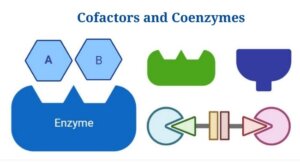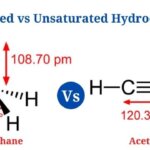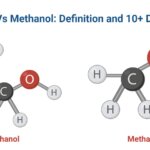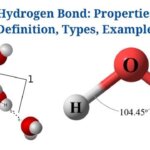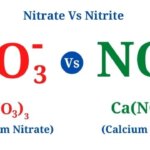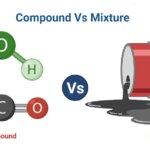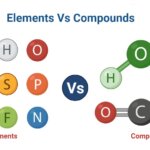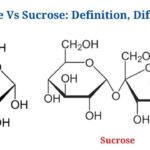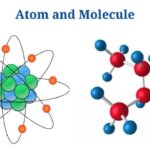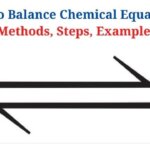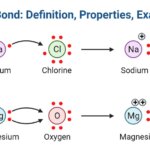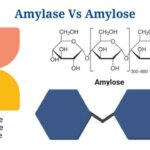Definition of cofactors
A cofactor is a non-protein component of an enzyme that is required for the enzyme’s catalytic function.
- The full enzyme is made up of cofactors and the apoenzyme (protein component) (holoenzyme). When a cofactor is removed from an enzyme, it loses its ability to function.
- Cofactors, also known as helper molecules, aid in the biochemical transformation of many biomolecules.
- Metal ions, organic molecules, and other chemical substances that have properties not found in amino acids are examples of cofactors. Cofactors are either made by the body, such as ATP, or they are consumed through the diet.
- The cofactor is a larger category that includes other categories such as coenzymes and prosthetics, depending on their features.
- Organic and inorganic cofactors are two separate types of cofactors. Inorganic cofactors include metal ions such as Mg2+ and Cu2+, whereas organic cofactors include organic compounds such as flavin.
- While most enzymes and enzyme complexes only require one cofactor, some enzymes and enzyme complexes require many cofactors.
- Various enzymes have different cofactor binding patterns to the protein unit of the enzyme. Some cofactors are loosely linked to the apoenzyme, whereas others are bound by covalent bonds, necessitating enzyme denaturation.
- Cofactors are distinguished from other similar structures such as ligands by the fact that their functions are derived from the binding.
- The fundamental role of cofactors is to provide chemical groups or components that aren’t found in the protein unit but are essential for the enzyme to function.
Definition of Coenzymes
Coenzymes are organic non-protein components of enzymes that act as cofactors in the catalysis process.
- Coenzymes are a type of cofactor that performs comparable tasks but includes organic molecules that can freely diffuse.
- Coenzymes, like chemical compounds, normally participate in enzyme-mediated catalysis in stoichiometric proportions.
- These are frequently altered throughout the reaction, and restoring them to their previous state may necessitate the use of a new enzyme-mediated catalysed reaction.
- Coenzymes are separated into two categories: prosthetic groups and cosubstrates. Cosubstrates are only transiently attached to proteins, whereas prosthetic groups are covalently and permanently bound to them. Both types of coenzymes serve the same purpose.
- Unlike cofactors, coenzymes are not taken through the food. These are made in the body through a variety of metabolic mechanisms.
- In nature, coenzymes are frequently thermostable and dialyzable. These can be directly connected to the enzyme’s protein unit or can be found in the cytoplasm.
- In most enzymes, coenzymes make up roughly 1% of the overall enzyme molecule.
- While most coenzymes are obtained from vitamins such as biotin and riboflavin, non-vitamin coenzymes such as ATP and coenzyme A are also found in the body and are created during chemical reactions.
Key Differences between Cofactors and Coenzymes
(Cofactors vs Coenzymes)
[ninja_tables id=”5509″]
Cofactors Examples
Clusters of Iron and Sulfur
- Iron-sulfur clusters are complexes made up of iron and sulphur atoms bound together by cysteinyl residues within the protein subunit.
- These clusters have unique features that aren’t seen in amino acids or other protein components.
- In electron transfer and redox sensing, iron-sulfur complexes have structural and functional roles. Clusters play a vital part in the electron transport chain’s redox reactions in mitochondria and chloroplasts.
- Both iron and sulphur atoms have a stronger ability to store and release electrons than other atoms.
- These are found in mitochondrial enzymes such as NADH dehydrogenase, complex I, and complex II.
Examples of Coenzymes
Pyrophosphate of thiamine
- Thiamine pyrophosphate is a thiamine diphosphokinase-produced thiamine or Vitamin B1 derivative.
- It’s found in all living things and helps to catalyse a variety of biological events.
- Thiamine pyrophosphate is made in the cytoplasm and is required for enzymes like transketolase and pyruvate- and oxoglutarate-dehydrogenases to function.
- It’s engaged in biochemical pathways that produce ATP, NADPH, and ribose-5-phosphate, all of which are essential for cellular energy production.
- The reversible decarboxylation of carbon molecules is catalysed by thiamine pyrophosphate.
- Vitamin B1 deficiency is one of the reasons of Korsakoff Syndrome in those who are addicted to alcohol.
Folic acid
- Folic acid is a kind of vitamin B that is found
- Folic acid is a vitamin-derived coenzyme that is essential for nucleic acid and amino acid synthesis.
- Folic acid is a growth factor for one-carbon compounds like formate and formaldehyde metabolism.
- These chemicals are purine and pyrimidine building blocks that are required for the production of various nucleic acids.
- Folic acid is a cofactor in a number of enzymes involved in nucleic acid synthesis, including serine hydroxymethylase.
Cofactors vs Coenzymes Citations
- Berg JM et al. (2012) Biochemistry. Seventh Edition. W. H Freeman and Company.
- Madigan MT et al. (2012). Brock Biology of Microorganisms. Thirteenth Edition. Pearson Education, Inc
- Huennekens, F. M., et al. “Folic Acid Coenzymes.” Science, vol. 128, no. 3316, 1958, pp. 120–124. JSTOR, jstor.org/stable/1754600. Accessed 28 Feb. 2021.
- https://pediaa.com/difference-between-coenzyme-and-cofactor/
Related Posts
- Dissecting Microscope (Stereo Microscope) Definition, Principle, Uses, Parts
- Saturated vs Unsaturated Hydrocarbons: Definition, Differences, Examples
- Ethanol Vs Methanol: Definition and 10+ Differences
- Hydrogen Bond: Properties, Definition, Types, Examples
- Nitrate Vs Nitrite: Definition, Differences, Examples
- Aromatic Compounds vs Aliphatic Compounds: Definition, Differences, Examples
- Compound Vs Mixture: Definition, Differences, Examples
- Elements Vs Compounds: Definition, Differences, Examples
- Molecules Vs Compounds: Definition, Differences, Examples
- Hard water Vs Soft water: Definition, Differences, Examples
- Glucose Vs Sucrose: Definition and Key Differences
- 13+ Difference Between Atom and Molecule with Examples
- How to Balance Chemical Equation: Methods, Steps, Examples
- Ionic Bond: Definition, Properties, Examples
- Amylase Vs Amylose: Definition, Differences, Example

